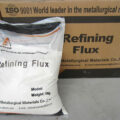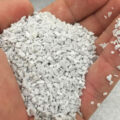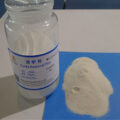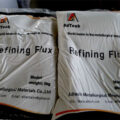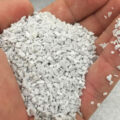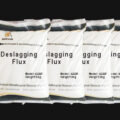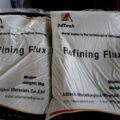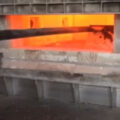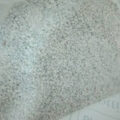Fluxes Used in Aluminum Liquid can also effectively remove the oxide film on the surface of the melt and improve the degassing effect. Fluxes used in aluminum liquid are generally composed of alkali metal and alkaline earth metal chlorides and fluorides. The main components of which are KCl, NaCl, NaF, CaF, Na3A1F6, Na2SiF6, etc. The physical and chemical properties of the flux play a decisive role in the refining effect.
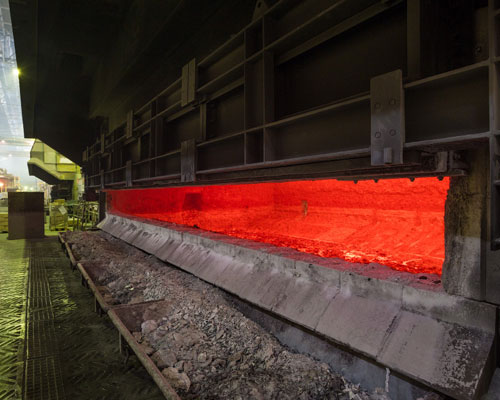
Degassing Effect of Flux
- Fluoride can react with aluminum melt to produce gaseous AlF, SiF4, BF3, etc. They mechanically promote the separation of the oxide film from the aluminum melt, and squeeze the oxide film and push it into the flux.
- The current generated at the interface where the above reaction occurs also causes the oxide film to be “washed” and broken. Therefore, the presence of the fluorine salt significantly accelerates the destruction process of the oxide film on the surface of the aluminum melt, and the hydrogen in the melt can easily escape.
- Fluoride (especially CaF2) can increase the surface tension of the mixed molten salt, make the molten salt of the adsorbed oxide spherical, facilitate separation from the melt, and reduce the loss caused by the solid molten slag wrapped in aluminum. As the flux-melt surface tension increases, the process of flux adsorption and inclusion is accelerated.

Instructions for Use Flux
The following methods are commonly used in the production of aluminum alloys by flux refining:
① The melt is refined in the ladle. First, put a package of flux in the ladle, then inject the melt, and stir well to increase the contact area of the two.
②The melt is refined in the induction furnace. The flux is loaded into the induction furnace, and the flux and the melt are fully mixed by means of the stirring action of the induced magnetic field to achieve the purpose of refining.
③ Refining with a mixer in the ladle or furnace, so that the flux is mechanically dispersed in the melt.
④The melt is refined in the magnetic field stirring device. This method relies on the electromagnetic force to continuously deliver the melt to the flux-metal interface to achieve active contact between the aluminum melt and the flux. The higher the melt rotation speed, the better the refining effect.
⑤ Electric flux refining. In this method, the melt is passed through the flux layer to which an electric field (on the metal-flux interface) is applied for continuous refining.
Fluxes Used in Aluminum Liquid
The flux refining method has a good effect on discharging non-metallic inclusions. However, the degree of purification to remove non-metallic inclusions in the melt depends on the physical and chemical properties of the flux. But largely depends on the refining process conditions, such as the amount of flux, the contact time and contact of the flux with the melt Area, stirring conditions, temperature, etc.

To refine aluminum alloy melts, hundreds of fluxes have been developed, and chloride fluxes based on sodium and potassium are the most widely used. For aluminum alloys with low magnesium content, sodium-potassium-based chloride refining agents are widely used. For aluminum alloys with high magnesium content, sodium-containing carnallite-based refining fluxes are used to avoid sodium brittleness.


